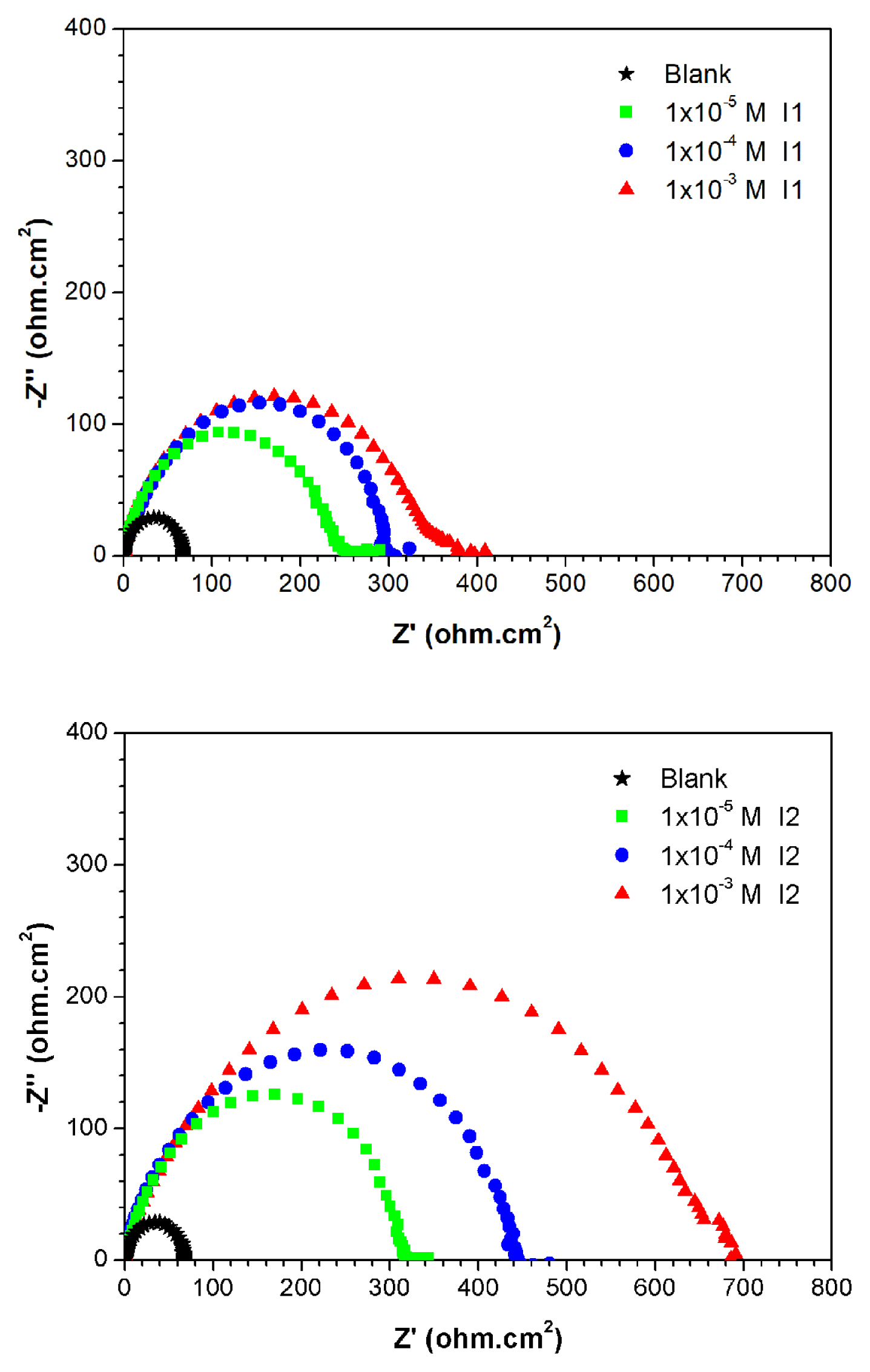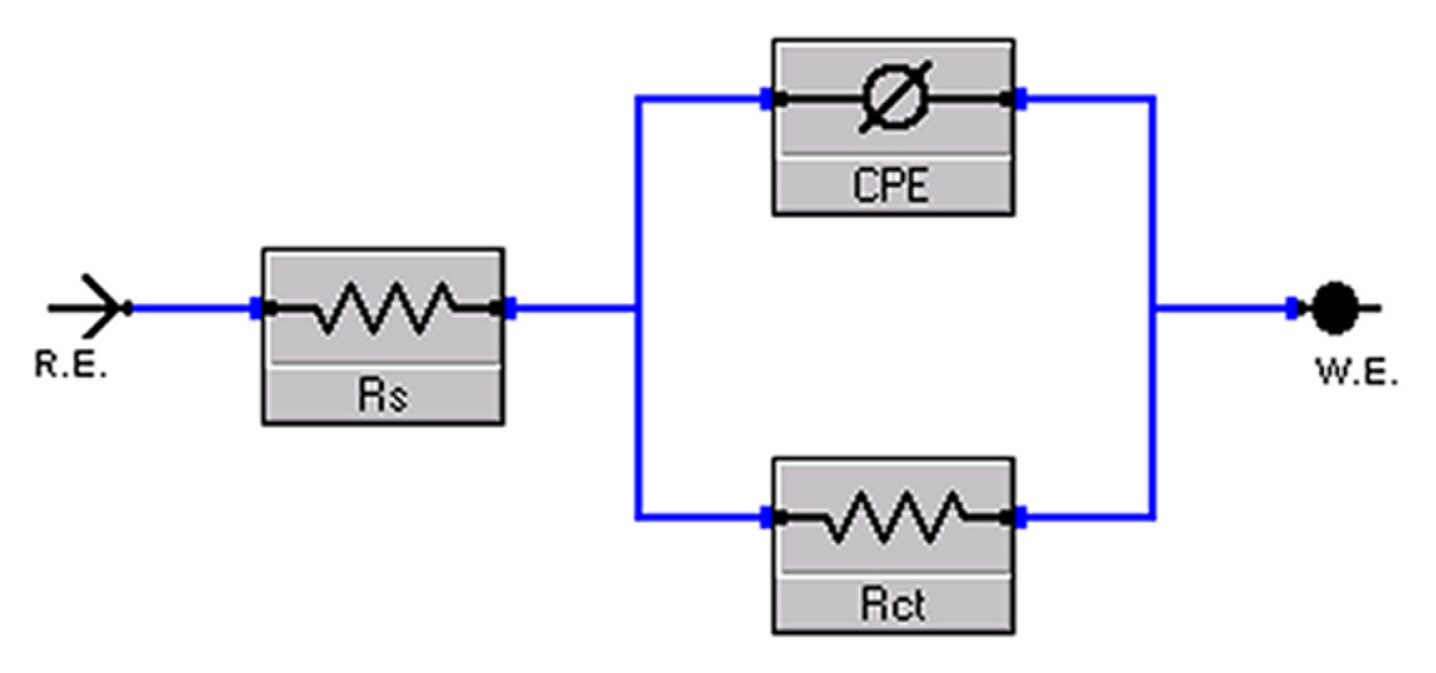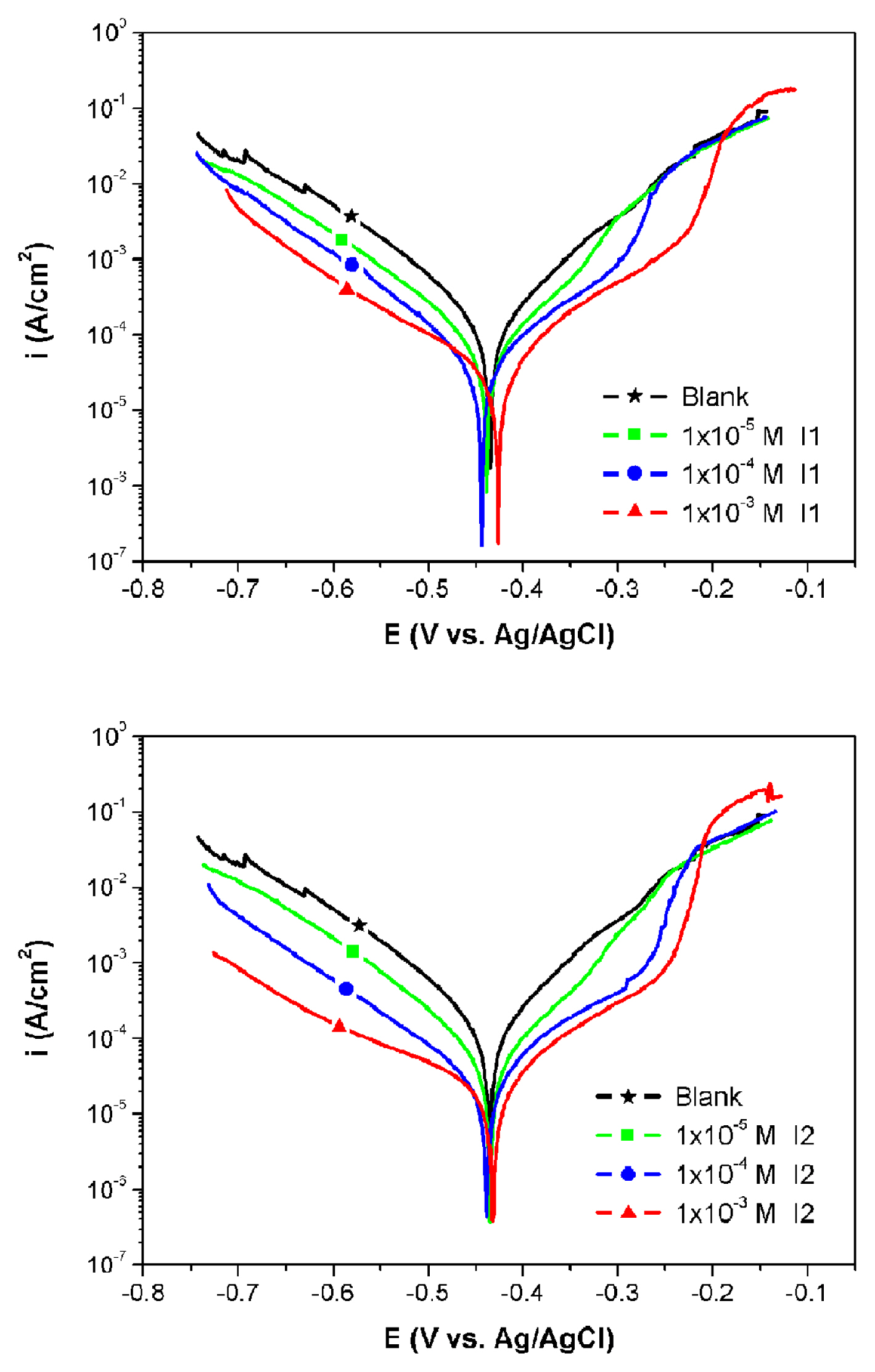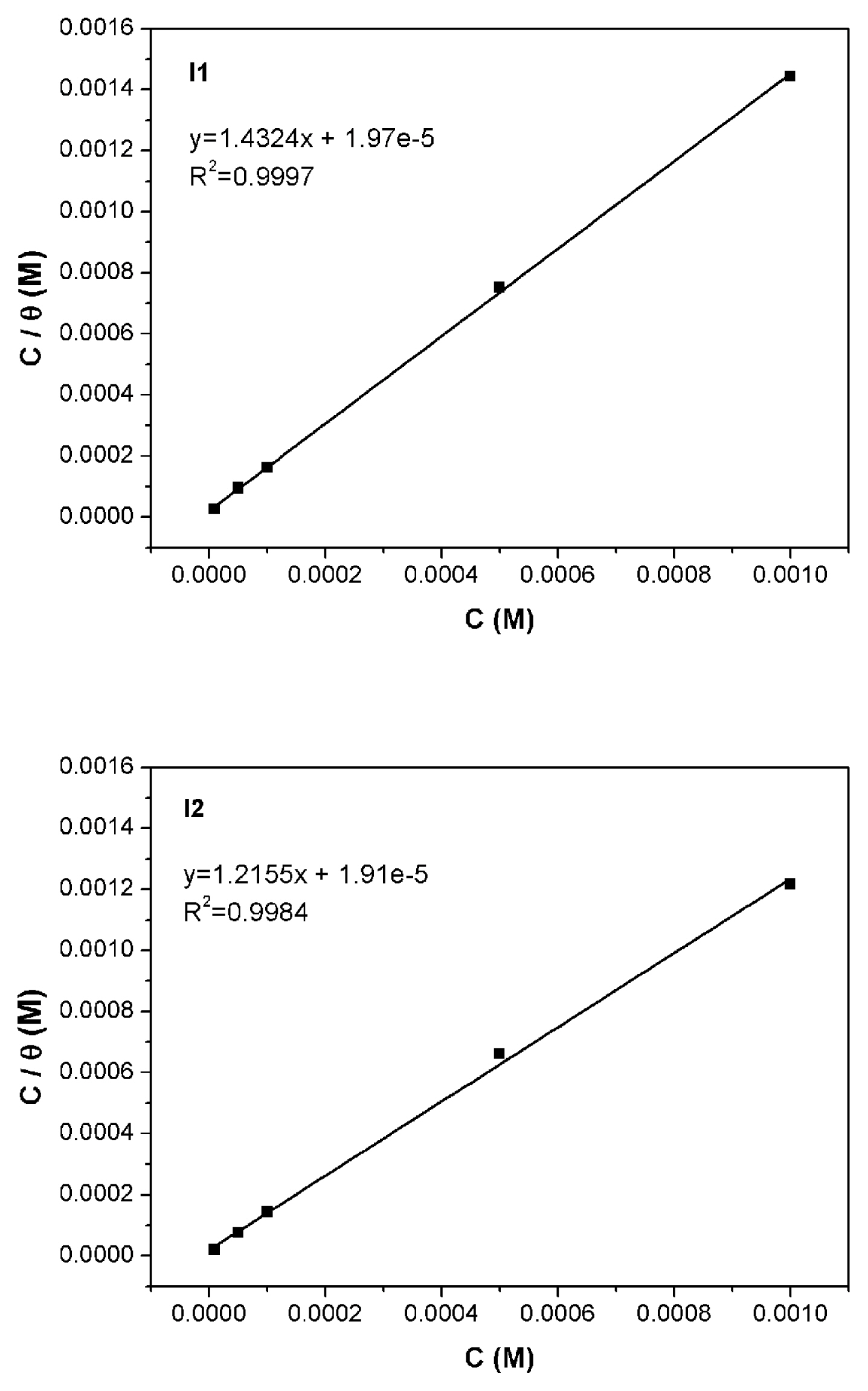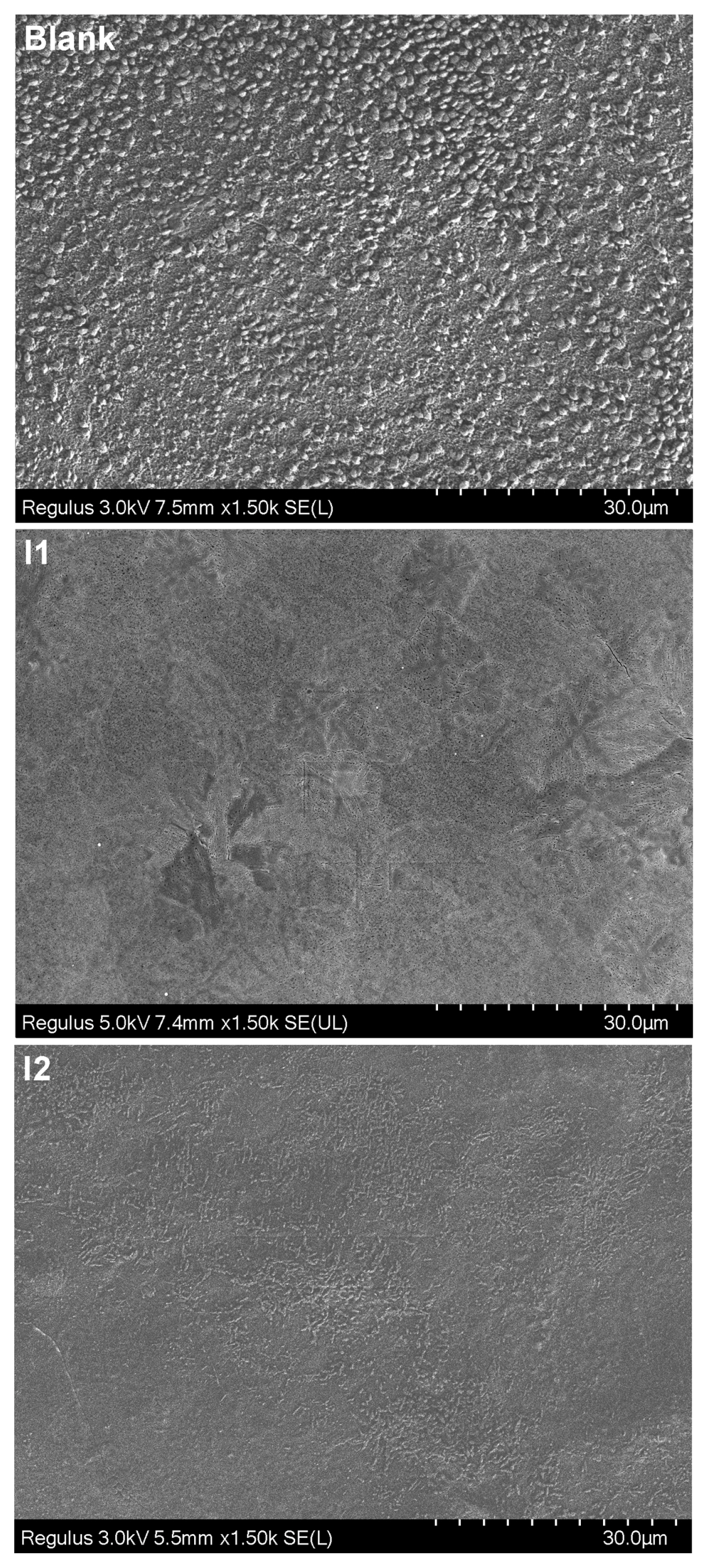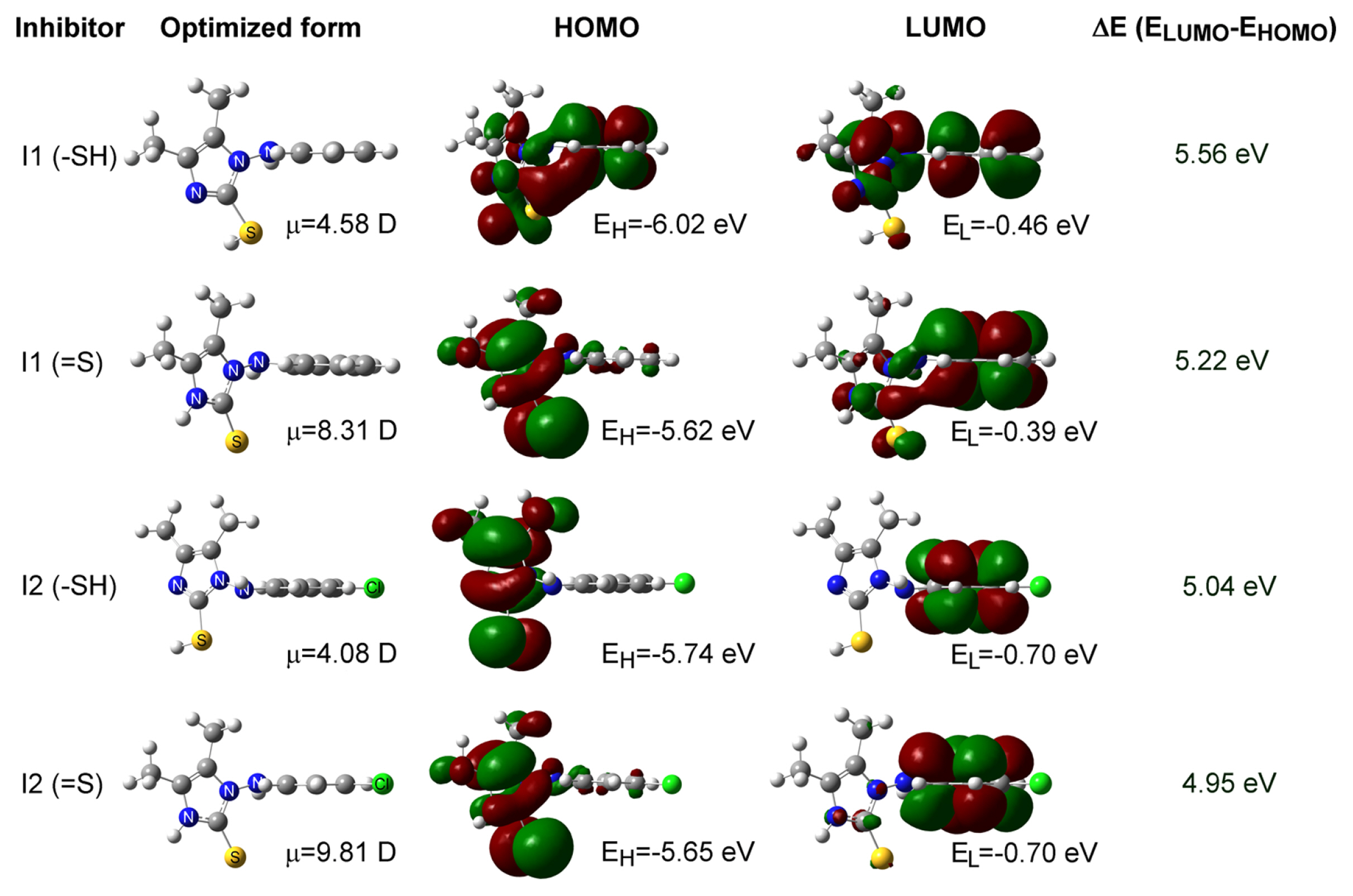[1] J. Ma, NA. Choudhury and Y. Sahai,
Renew Sust Energ Rev,
2010,
14(
1), 183ŌĆō199.

[2] KM. Usher, AH. Kaksonen, I. Cole and D. Marney,
Int Biodeter Biodegr,
2014,
93, 84ŌĆō106.

[3] XH. Li, SD. Deng, H. Fu and TH. Li,
Electrochim Acta,
2009,
54(
16), 4089ŌĆō4098.

[4] MA. Hegazy, AY. El-Etre, M. El-Shafaie and KM. Berry,
J Mol Liq,
2016,
214, 347ŌĆō356.

[5] JH. Al-Fahemi, M. Abdallah, EAM. Gad and BAAL. Jahdaly,
J Mol Liq,
2016,
222, 1157ŌĆō1163.

[6] PE. Alvarez, MV. Fiori-Bimbi, A. Neske, SA. Brandan and CA. Gervasi,
J Ind Eng Chem,
2018,
58, 92ŌĆō99.

[7] ZY. Hu, YB. Meng, XM. Ma, HL. Zhu, J. Li, C. Li and DL. Cao,
Corros Sci,
2016,
112, 563ŌĆō575.

[8] D. Daoud, T. Douadi, H. Hamani, S. Chafaa and M. Al-Noaimi,
Corros Sci,
2015,
94, 21ŌĆō37.

[9] E. Gutierrez, JA. Rodriguez, J. Cruz-Borbolla, JG. Alvarado-Rodriguez and P. Thangarasu,
Corros Sci,
2016,
108, 23ŌĆō35.

[10] IB. Obot, NK. Ankah, AA. Sorour, ZM. Gasem and K. Haruna,
Sustain Mater Techno,
2017,
14, 1ŌĆō10.

[11] XM. Wang, HY. Yang and FH. Wang,
Corros Sci,
2011,
53(
1), 113ŌĆō121.

[12] SE. Kaskah, M. Pfeiffer, H. Klock, H. Bergen, G. Ehrenhaft, P. Ferreira, J. Gollnick and CB. Fischer,
Surf Interfaces,
2017,
9, 70ŌĆō78.

[13] RW. Revie and HH. Uhlig, Corrosion and Corrosion Control: An Introduction to Corrosion Science and Engineering. fourth ed. Wiley, 2006.
[14] IB. Obot, SA. Umoren, ZM. Gasem, R. Suleiman and B. El Ali,
J Ind Eng Chem,
2015,
21, 1328ŌĆō1339.

[15] IB. Obot and NO. Obi-Egbedi,
Mater Chem Phys,
2010,
122(
2ŌĆō3), 325ŌĆō328.

[16] IB. Obot, NO. Obi-Egbedi and SA. Umoren,
Corros Sci,
2009,
51(
8), 1868ŌĆō1875.

[17] IB. Obot and NO. Obi-Egbedi,
Corros Sci,
2010,
52(
1), 198ŌĆō204.

[18] MM. Kabanda, LC. Murulana, M. Ozcan, F. Karadag, I. Dehri, IB. Obot and EE. Ebenso,
Int J Electrochem Soc,
2012,
7(
6), 5035ŌĆō5056.

[19] IB. Obot and NO. Obi-Egbedi,
Curr Appl Phys,
2011,
11(
3), 382ŌĆō392.

[20] TK. Chaitra, KNS. Mohana and HC. Tandon,
J Mol Liq,
2015,
211, 1026ŌĆō1038.

[21] K. Hu, J. Zhuang, JT. Ding, Z. Ma, F. Wang and XG. Zeng,
Corros Sci,
2017,
125, 68ŌĆō76.

[22] DS. Chauhan, KR. Ansari, AA. Sorour, MA. Quraishi, H. Lgaz and R. Salghi,
Int J Biol Macromol,
2018,
107, 1747ŌĆō1757.

[23] P. Dohare, DS. Chauhan, AA. Sorour and MA. Quraishi,
Mater Discov,
2017,
9, 30ŌĆō41.

[24] R. Solmaz, G. Kardas, B. Yazici and M. Erbil,
Colloid Surface A,
2008,
312(
1), 7ŌĆō17.

[25] AA. Al-Sarawya, AS. Fouda and WAS. El-Dein,
Desalination,
2008,
229(
1ŌĆō3), 279ŌĆō293.

[26] AS. Fouda, AA. Al-Sarawy and EE. El-Katori,
Desalination,
2006,
201(
1ŌĆō3), 1ŌĆō13.

[27] AY. Musa, AAH. Kadhum, AB. Mohamad, MS. Takriff, AR. Daud and SK. Kamarudin,
Corros Sci,
2010,
52(
2), 526ŌĆō533.

[28] F. Bentiss, M. Traisnel and M. Lagrenee,
Corros Sci,
2000,
42(
1), 127ŌĆō146.

[29] F. Bentiss, M. Lagrenee, M. Traisnel and JC. Hornez,
Corros Sci,
1999,
41(
4), 789ŌĆō803.

[30] Z. Zhang, SH. Chen, YH. Li, SH. Li and L. Wang,
Corros Sci,
2009,
51(
2), 291ŌĆō300.

[31] HO. Curkovic, E. Stupnisek-Lisac and H. Takenouti,
Corros Sci,
2010,
52(
2), 398ŌĆō405.

[32] O. Benali, L. Larabi and Y. Harek,
J Saudi Chem Soc,
2010,
14(
2), 231ŌĆō235.

[33] O. Benali, L. Larabi, M. Traisnel, L. Gengembre and Y. Harek,
Appl Surf Sci,
2007,
253(
14), 6130ŌĆō6139.

[34] A. Ghanbari, MM. Attar and M. Mahdavian,
Mater Chem Phys,
2010,
124(
2ŌĆō3), 1205ŌĆō1209.

[35] M. Duran and S. Demirayak,
Med Chem Res,
2013,
22(
9), 4110ŌĆō4124.


[36] J. Aljourani, K. Raeissi and MA. Golozar,
Corros Sci,
2009,
51(
8), 1836ŌĆō1843.

[37] F. Bentiss, M. Lebrini and M. Lagrenee,
Corros Sci,
2005,
47(
12), 2915ŌĆō2931.

[38] JG. Schantl and IM. Lagoja,
Heterocycles,
1997,
45(
4), 691ŌĆō700.

[39] R. Solmaz, E. Altunbas and G. Kardas,
Mater Chem Phys,
2011,
125(
3), 796ŌĆō801.

[40] A. Chetouani, A. Aouniti, B. Hammouti, N. Benchat, T. Benhadda and S. Kertit,
Corros Sci,
2003,
45(
8), 1675ŌĆō1684.

[41] M. Behpour, SM. Ghoreishi, N. Soltani and M. Salavati-Niasari,
Corros Sci,
2009,
51(
5), 1073ŌĆō1082.

[42] L. Jiang, YJ. Qiang, ZL. Lei, JN. Wang, ZJ. Qin and B. Xiang,
J Mol Liq,
2018,
255, 53ŌĆō63.

[43] R. Solmaz,
Corros Sci,
2010,
52(
10), 3321ŌĆō3330.

[44] YM. Tang, F. Zhang, SX. Hu, ZY. Cao, ZL. Wu and WH. Jing,
Corros Sci,
2013,
74, 271ŌĆō282.

[45] SSA. El Rehim, HH. Hassan and MA. Amin,
Mater Chem Phys,
2002,
78, 337ŌĆō348.

[46] QB. Zhang and YX. Hua,
Mater Chem Phys,
2010,
119(
1ŌĆō2), 57ŌĆō64.

[47] KF. Khaled,
Corros Sci,
2010,
52(
9), 2905ŌĆō2916.

[48] R. Kumar, S. Chahal, S. Kumar, S. Lata, H. Lgaz, R. Salghi and S. Jodeh,
J Mol Liq,
2017,
243, 439ŌĆō450.

[49] C. Verma, EE. Ebenso, I. Bahadur, IB. Obot and MA. Quraishi,
J Mol Liq,
2015,
212, 209ŌĆō218.

[50] S. Safak, B. Duran, A. Yurt and G. Turkoglu,
Corros Sci,
2012,
54, 251ŌĆō259.

[51] KF. Khaled,
Mater Chem Phys,
2008,
112(
1), 290ŌĆō300.

[52] M. Behpour, SM. Ghoreishi, N. Mohammadi, N. Soltani and M. Salavati-Niasari,
Corros Sci,
2010,
52(
12), 4046ŌĆō4057.

[53] N. Yilmaz, A. Fitoz, U. Ergun and KC. Emregul,
Corros Sci,
2016,
111, 110ŌĆō120.

[54] C. Lai, B. Xie, LK. Zou, XW. Zheng, X. Ma and SS. Zhu,
Results Phys,
2017,
7, 3434ŌĆō3443.

[55] VR. Saliyan and AV. Adhikari,
Corros Sci,
2008,
50(
1), 55ŌĆō61.

[56] AM. Fekry and RR. Mohamed,
Electrochim Acta,
2010,
55(
6), 1933ŌĆō1939.

[57] M. Shabani-Nooshabadi and MS. Ghandchi,
J Ind Eng Chem,
2015,
31, 231ŌĆō237.

[58] EK. Ardakani, E. Kowsari and A. Ehsani,
Colloid Surface A,
2020,
586, 124195.

[59] I. Ahamad, R. Prasad and MA. Quraishi,
Mater Chem Phys,
2010,
124(
2ŌĆō3), 1155ŌĆō1165.

[60] V. Saraswat and M. Yadav, J Mol Liq, 2020, 297, 1ŌĆō14.
[61] T. Zhou, J. Yuan, ZQ. Zhang, X. Xin and GY. Xu,
Colloid Surface A,
2019,
575, 57ŌĆō65.

[62] MA. Hegazy, AM. Hasan, MM. Emara, MF. Bakr and AH. Youssef,
Corros Sci,
2012,
65, 67ŌĆō76.

[63] R. Kumar, R. Chopra and G. Singh,
J Mol Liq,
2017,
241, 9ŌĆō19.

[64] N. Khalil,
Electrochim Acta,
2003,
48(
18), 2635ŌĆō2640.

[65] M. Mahdavian and S. Ashhari,
Electrochim Acta,
2010,
55(
5), 1720ŌĆō1724.

[66] KS. Jacob and G. Parameswaran,
Corros Sci,
2010,
52, 224ŌĆō228.

[67] S. Deng, X. Li and X. Xie,
Corros Sci,
2014,
80, 276ŌĆō289.






